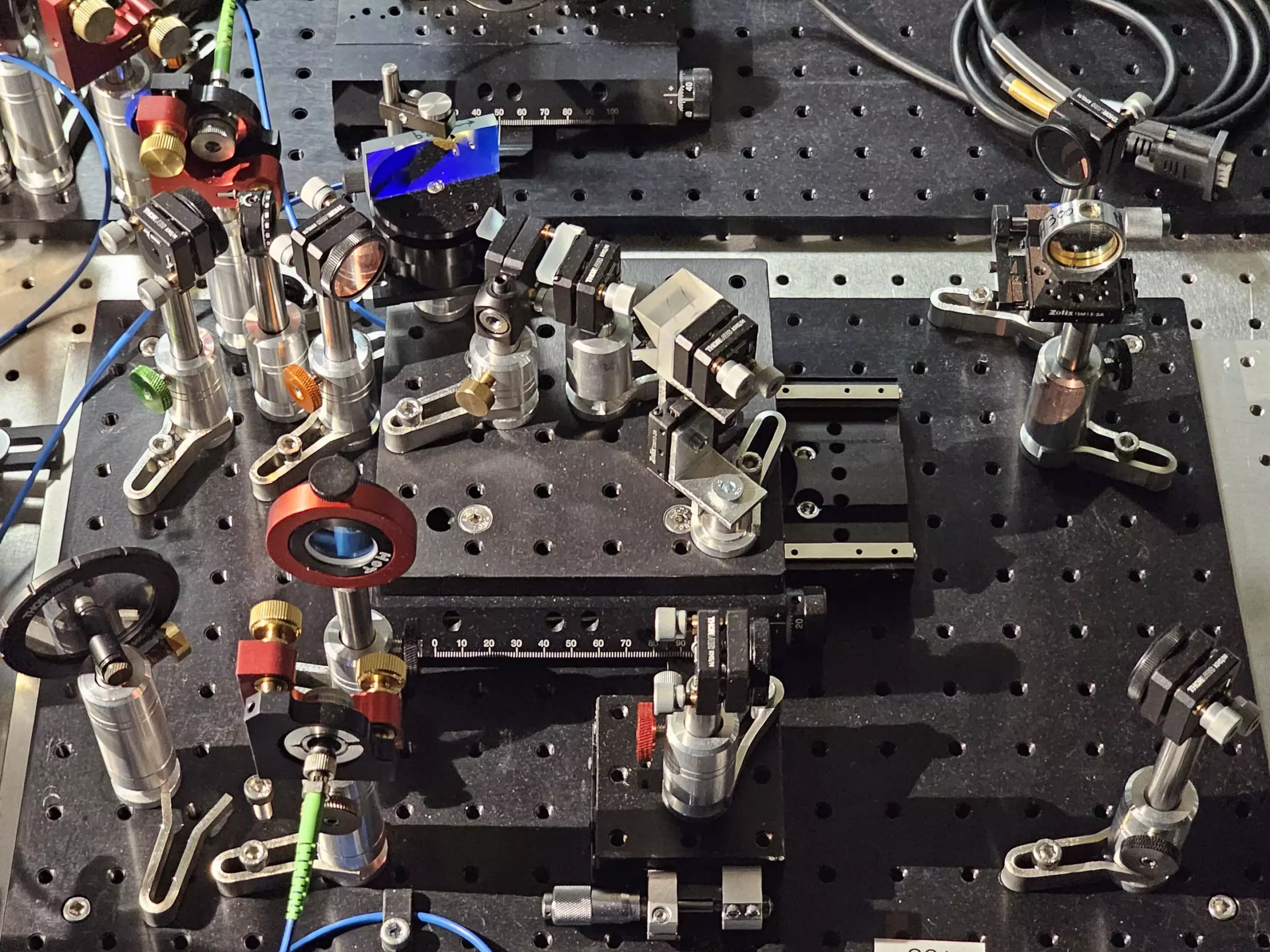Recent advances in quantum optics have paved the way for groundbreaking innovations in spectroscopy, a field dedicated to analyzing the light spectrum to identify materials and their properties. At the forefront of this scientific advancement are two researchers from the University of Warsaw, who have introduced a novel quantum-inspired super-resolving spectrometer known as the Super-resolution of Ultrafast pulses via Spectral Inversion (SUSI). This sophisticated device, developed within the Quantum Optical Devices Lab at the Centre for Quantum Optical Technologies, significantly enhances the resolution of spectroscopic measurements, boasting an improvement more than double that of conventional techniques.
By marrying principles from quantum mechanics with spectroscopic measurement technologies, this innovation aims to revolutionize how we detect and analyze light, thereby expanding its applications across scientific fields. The research findings were recently published in the journal Optica, marking a pivotal moment for both the scientific community and industries reliant on advanced spectroscopic techniques.
Spectroscopy plays a critical role in various scientific endeavors, from chemistry to astrophysics. By studying the different wavelengths of light that a substance emits or absorbs, researchers can glean essential information about that material. For example, the unique spectral signature of a chemical compound can confirm its identity, while astronomers can determine properties such as the age and size of distant stars through their light spectra. Furthermore, in the context of modern communication technologies, different colors of light encode information transmitted through fiber networks akin to multiple radio channels working simultaneously.
Despite its vast potential, traditional spectroscopic methods face the formidable challenge of discerning between closely spaced spectral lines or channels. This problem has long been examined through the lens of Rayleigh’s criterion, which posits that overlapping channels become nearly indistinguishable. Consequently, optimizing measurement precision has been an ongoing goal in quantum information science, with much attention focused on the limitations posed by conventional direct imaging techniques.
Recent progress in quantum information science has unveiled new strategies for valuably harnessing the phase information present in the electromagnetic field of light, which was previously overlooked. The SUSI device employs this concept, emphasizing the transformation of the complex electromagnetic field prior to detection, thereby enhancing the utilization of latent information.
At its core, the SUSI device employs interferometric techniques that parallel quantum-inspired imaging methods. A challenge lay in applying these principles to the domains of time and frequency, a task that required innovative thinking. In super-resolved quantum imaging, light emanating from an object is typically split into two paths in an interferometer, with one path containing an image inverter. When the two paths recombine, they produce interference patterns that reveal critical information based on the movements of the light sources.
Translating this concept into the context of light pulses—where multiple pulses arrive simultaneously but differ slightly in color—represents a significant evolution in measurement techniques. Standard methodologies would usually involve dispersive devices such as diffraction gratings, which can restrict the precision of measuring closely spaced pulses. The SUSI device addresses this shortcoming with a resolute approach, incorporating Fourier transforms to enhance resolution further.
A breakthrough finding was determining how best to implement the inversion across different frequencies. The researchers acknowledged that rather than placing the inverter directly within a single arm of the interferometer, they could accomplish the same objective by utilizing Fourier and inverse Fourier transforms. This approach not only improved balance within the system but also advanced the scalability of the device.
The SUSI spectrometer developed by Ph.D. student Michał Lipka under the guidance of Dr. Michał Parniak brilliantly adapts existing technology by ensuring comparable losses across both arms of the interferometer. Moreover, the components required for SUSI can readily be integrated into photonic chips, propelling the device into practical applications within super-spectrometers and optical networks.
As quantum technologies continue to evolve, the introduction of the SUSI spectrometer marks an exciting inflection point in the quest for higher resolution and precision in spectroscopy. With potential applications spanning multiple industries, including telecommunications and scientific research, this innovative device stands to reshape our understanding of light and its myriad interactions with matter. As researchers continue to refine and miniaturize this technology, the SUSI spectrometer may soon become an indispensable tool in both quantum and optical networks, pushing the boundaries of what was once thought possible in the realm of spectroscopy.

